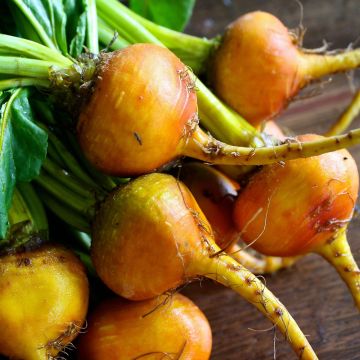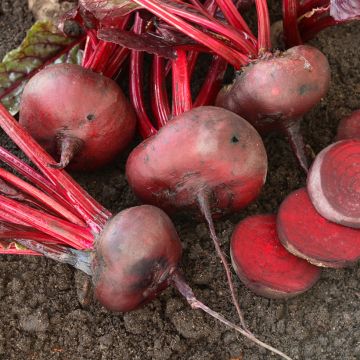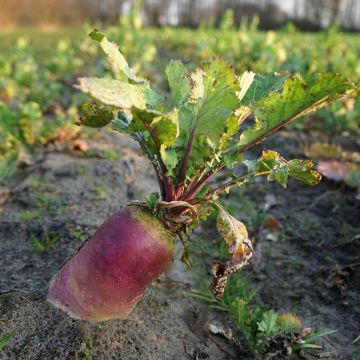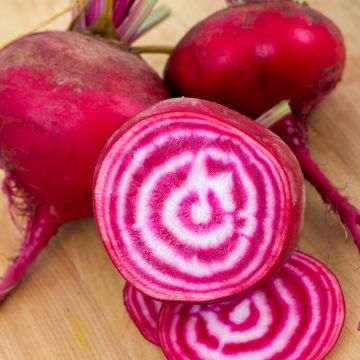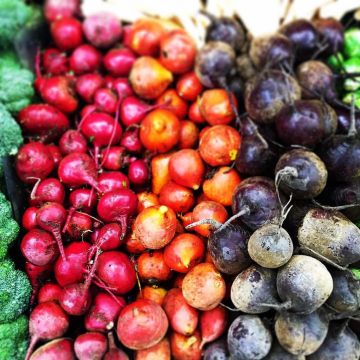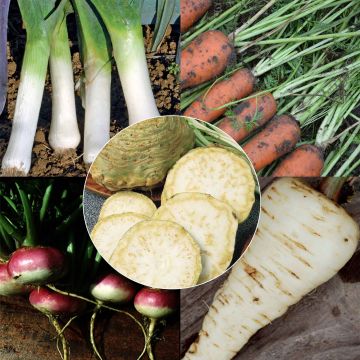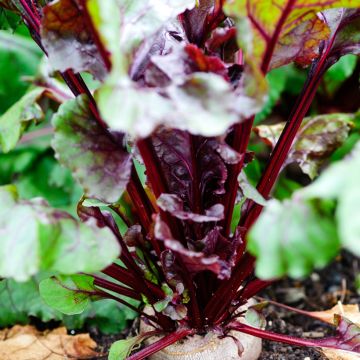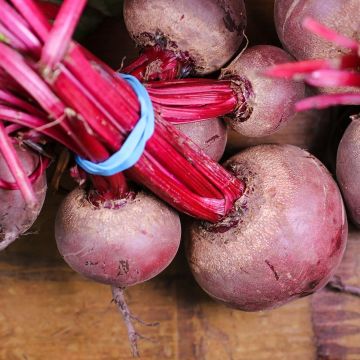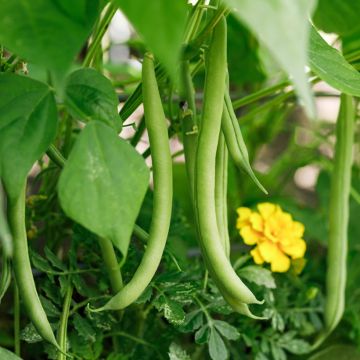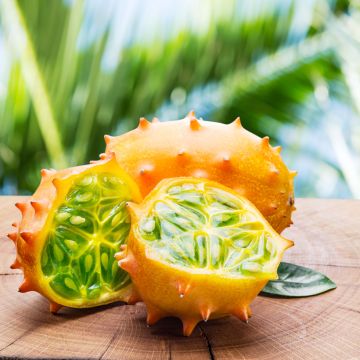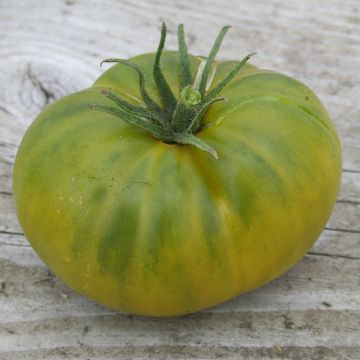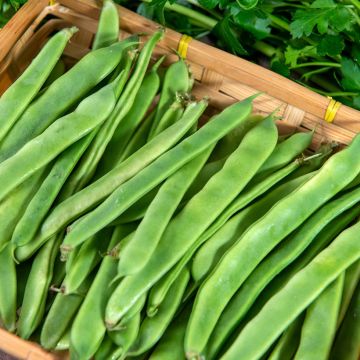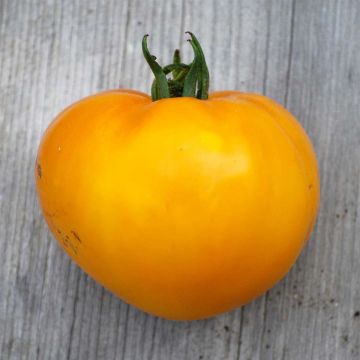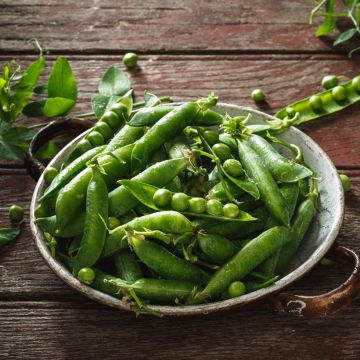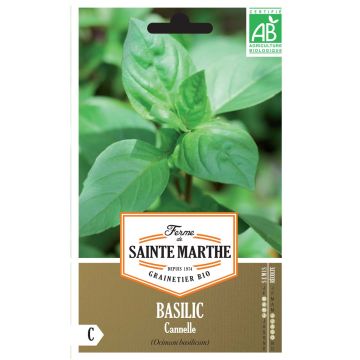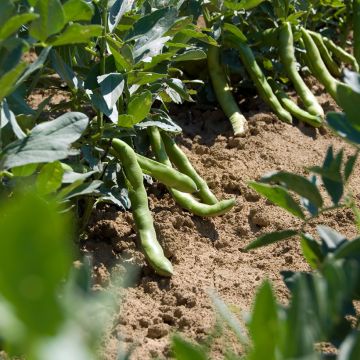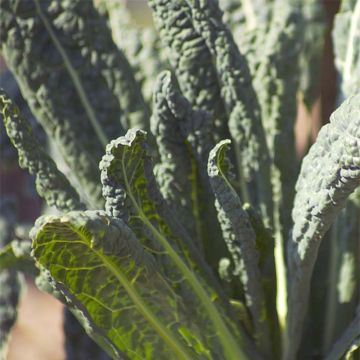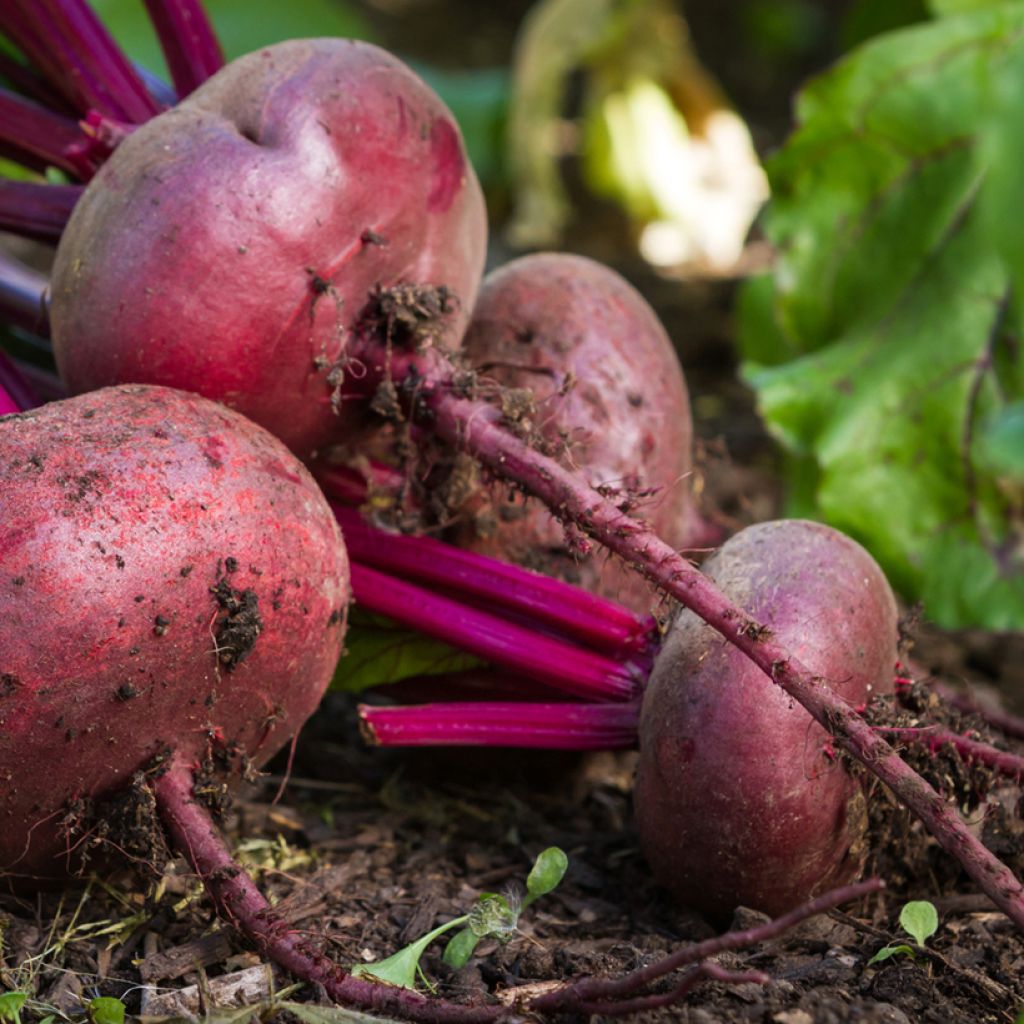

Beta vulgaris 'Kahira' - Egyptian Beetroot
Beta vulgaris 'Kahira' - Egyptian Beetroot
Beta vulgaris noire plate d'Egypte
Beetroot 'Egyptian Turnip Rooted', Beta vulgaris 'Egyptian Turnip Rooted', Beta vulgaris 'Egyptian Flat'
First time I've sown and harvested them, they are very good.
Rodolphe , 22/11/2024
This item cannot be shipped to the selected country
Dispatch by letter from €3.90
More information
Dispatch by letter from €3.90
More information
Schedule delivery date,
and select date in basket
This plant carries a 6 months recovery warranty
More information
We guarantee the quality of our plants for a full growing cycle, and will replace at our expense any plant that fails to recover under normal climatic and planting conditions.
Seed-only orders are dispatched by sealed envelope. The delivery charge for seed-only orders is €3.90.
Description
'Egyptian Black Beetroot' is a very early-season Egyptian heirloom beetroot. The round, flattened roots grow virtually above ground. The smooth skin encloses dark red, juicy, flavoursome flesh that is best eaten raw. This exceptionally heat-resistant variety is slow bolting. Sow when there is no longer a risk of frost. Germination typically takes 8 to 10 days.
Beets are biennial vegetables. During the first year, nutrients are stored in the root. During the second year, the plant draws from its food reserve to produce flowers and seeds. The edible root is harvested in the first year; if you want to grow your seeds, you must wait until the following year and set aside a few plants. Beets come in a variety of shapes and colours. They can be red, white, yellow, orange or pink, spherical, elongated, oval, etc. The carbohydrate content often differs from one variety to the next.
Beets fall into three main categories, namely:
- Common or red beetroots, the type usually found in vegetable gardens
- Sugar beets, grown on a larger scale for the sugar industry
- "Mangel-wurzel" beets or Fodder beets, generally grown for livestock
Although famous for their high carb content, beets are packed with essential vitamins and minerals, including potassium. The leaves can be eaten like spinach or baby greens with their pretty dark red veining. Make sure to pick them whilst they are still young and tender.
Storage: pick the beets carefully then leave them to dry for a whole day outdoors, preferably in the shade. If you wish to keep them over winter, store them in a cool, dark place (a cellar is perfect). Burying the beets under a layer of dry sand will help preserve their flavour and texture.
Good to know: Beets do best in full sun, in loose, fertile soil. Mulching will help keep the soil moist whilst limiting weed growth.
Harvest
Plant habit
Foliage
Botanical data
Beta
vulgaris
noire plate d'Egypte
Chenopodiaceae
Beetroot 'Egyptian Turnip Rooted', Beta vulgaris 'Egyptian Turnip Rooted', Beta vulgaris 'Egyptian Flat'
Mediterranean
Biennial
Other Beetroot seeds
Planting and care
Early cultivation: Sow seeds in boxes from February until April to grow plants. Plant the seeds together so that multiple plants from each group grow. Wait until the first seedlings appear, then transplant them in April. Once they grow about 10 cm tall and have five leaves, plant them approximately 20 to 25 cm apart. Choose the most vigorous plants. This method allows you to harvest the plants from May to July.
For seasonal cultivation: If you want to grow beetroot, you can plant the seeds in the ground between mid-April and July. Beetroot grows best in cool and loose soil, so begin by using a rake to loosen the soil. Add a bit of ash to the soil if needed because beetroot requires a lot of potash. Then, add well-decomposed manure or compost to the furrows. Once the beetroot seedlings have grown to about 10 cm and five leaves, you should thin them out by spacing them 20 to 25 cm apart. If you're planting multiple rows of beetroot, space them 20 to 25 cm apart and choose the most vigorous plants. To harvest the beetroot, wait until any time between July and October.
Growing: When it's hot and dry, watering beetroot regularly is essential to prevent its roots from becoming too hard. It's not recommended to plant beetroot with leeks, but it can grow well with lettuce, onions, or radishes. Beetroot is a hardy plant that's not very prone to disease.
Harvesting: When you thin out your plants in spring, you can keep the young leaves to use in a salad. If you plant in April, you can harvest your first beetroot in July and continue harvesting until October if you sow in July.
Seedlings
Care
Intended location
Vegetable seeds
Haven't found what you were looking for?
Hardiness is the lowest winter temperature a plant can endure without suffering serious damage or even dying. However, hardiness is affected by location (a sheltered area, such as a patio), protection (winter cover) and soil type (hardiness is improved by well-drained soil).

Photo Sharing Terms & Conditions
In order to encourage gardeners to interact and share their experiences, Promesse de fleurs offers various media enabling content to be uploaded onto its Site - in particular via the ‘Photo sharing’ module.
The User agrees to refrain from:
- Posting any content that is illegal, prejudicial, insulting, racist, inciteful to hatred, revisionist, contrary to public decency, that infringes on privacy or on the privacy rights of third parties, in particular the publicity rights of persons and goods, intellectual property rights, or the right to privacy.
- Submitting content on behalf of a third party;
- Impersonate the identity of a third party and/or publish any personal information about a third party;
In general, the User undertakes to refrain from any unethical behaviour.
All Content (in particular text, comments, files, images, photos, videos, creative works, etc.), which may be subject to property or intellectual property rights, image or other private rights, shall remain the property of the User, subject to the limited rights granted by the terms of the licence granted by Promesse de fleurs as stated below. Users are at liberty to publish or not to publish such Content on the Site, notably via the ‘Photo Sharing’ facility, and accept that this Content shall be made public and freely accessible, notably on the Internet.
Users further acknowledge, undertake to have ,and guarantee that they hold all necessary rights and permissions to publish such material on the Site, in particular with regard to the legislation in force pertaining to any privacy, property, intellectual property, image, or contractual rights, or rights of any other nature. By publishing such Content on the Site, Users acknowledge accepting full liability as publishers of the Content within the meaning of the law, and grant Promesse de fleurs, free of charge, an inclusive, worldwide licence for the said Content for the entire duration of its publication, including all reproduction, representation, up/downloading, displaying, performing, transmission, and storage rights.
Users also grant permission for their name to be linked to the Content and accept that this link may not always be made available.
By engaging in posting material, Users consent to their Content becoming automatically accessible on the Internet, in particular on other sites and/or blogs and/or web pages of the Promesse de fleurs site, including in particular social pages and the Promesse de fleurs catalogue.
Users may secure the removal of entrusted content free of charge by issuing a simple request via our contact form.


































